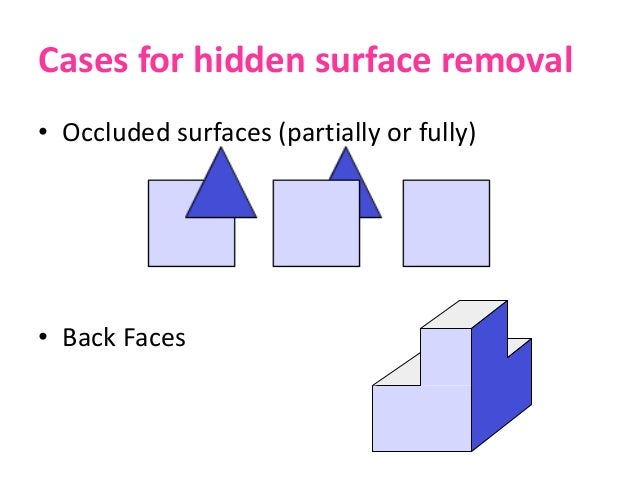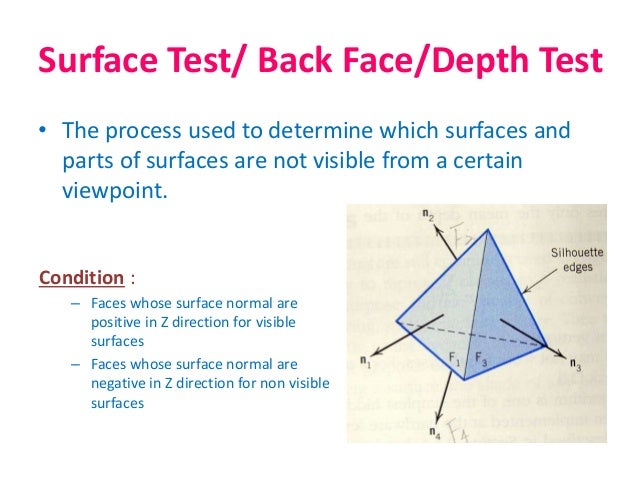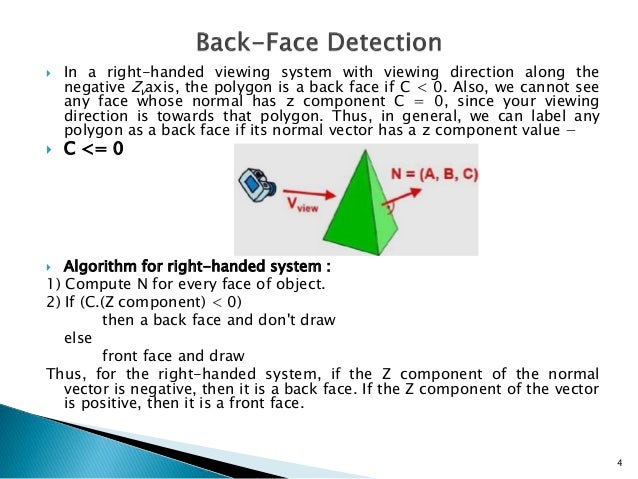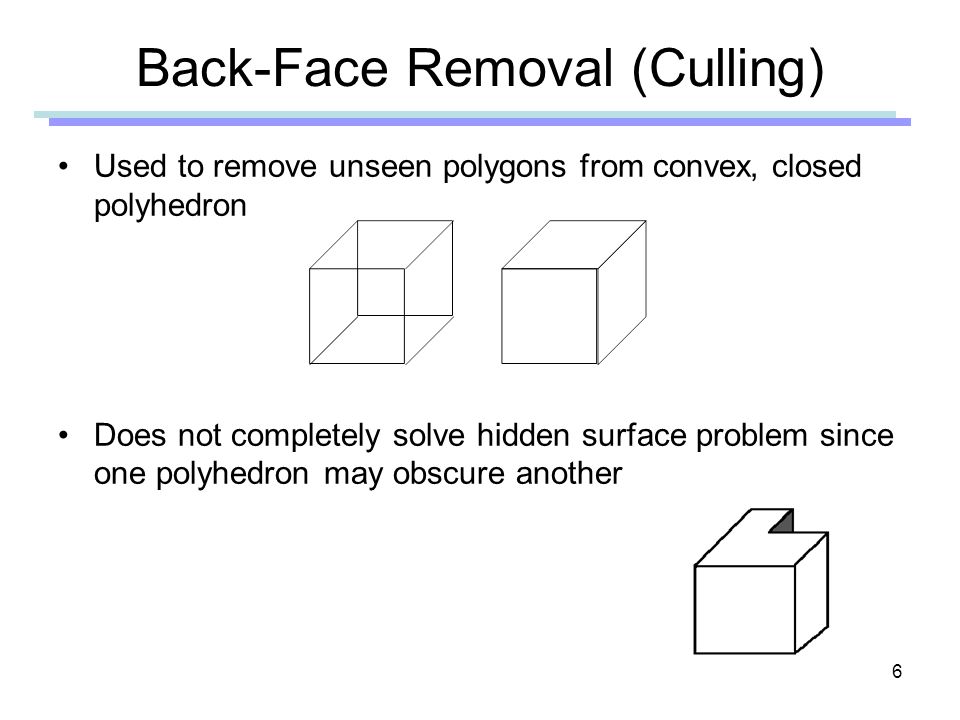Hidden Face Removal Algorithm

But that is still far from satisfactory because most of the o 0 junctions.
Hidden face removal algorithm. Expected number of conflicts. Back face removal back face culling we see a polygon if its normal is pointed toward the viewer. Try looking up some basic 3d tutorials that show you how to generate normals and how to use the cross product and dot product vector operations. Plane equations finding polygon normals ax by cz d 0 normal vector.
A hidden surface determination algorithm is a solution to the visibility problem which was one of the first major problems in the field of 3d computer graphics. The most popular hidden surface removal algorithm uses z buffer or depth buffer. Their sizes are the same. N log n 1.
Viewing frustrum culling n definitions. Hidden surface removal n drawing polygonal faces on screen consumes cpu cycles n we cannot see every surface in scene n to save time draw only surfaces we see n surfaces we cannot see and their elimination methods. Mulmuley s algorithm provides hidden surface removal where the time spent processing obstructed surfaces is inversely proportional to the depth of the surface. Pixel 241 200 at 350 250 resolution screen.
Hidden surface algorithms clipping image space algorithms z buffering painter s algorithm object space algorithms binary space partition trees back face removal example. Hidden surface removal summary z buffer is easy to implement in hardware and is a standard technique need to combine z buffers with an object based approach when there are many polygons bsp trees portal culling front to back traversal reduces the cost. When referring to line rendering it is known as hi. You don t need to worry about z sorting just yet apply some hidden surface removal algorithm that filters out triangles that are not facing the viewer that would be a good start.
N a b c n q r x q p in many cases the vertex normals have been calculated by a polygoniser normals and cross products must be normalised. Optimal planar partition algorithm in mull can be easily extended so as to obtain an o n log n 8 0 hidden surface removal algorithm. It should be blue. If we know that a is in front of b and b is in front of c we can fill or paint c followed by paint b and finally paint a onto the display.
In 3d computer graphics hidden surface determination is the process of identifying what surfaces and parts of surfaces can be seen from a particular viewing angle. Its called z buffer algorithm where we need z buffer in addition to the frame buffer. Back face culling n faces outside view volume. Thus hidden suface removal can indeed be performed in time that is linear in 0 0.


















